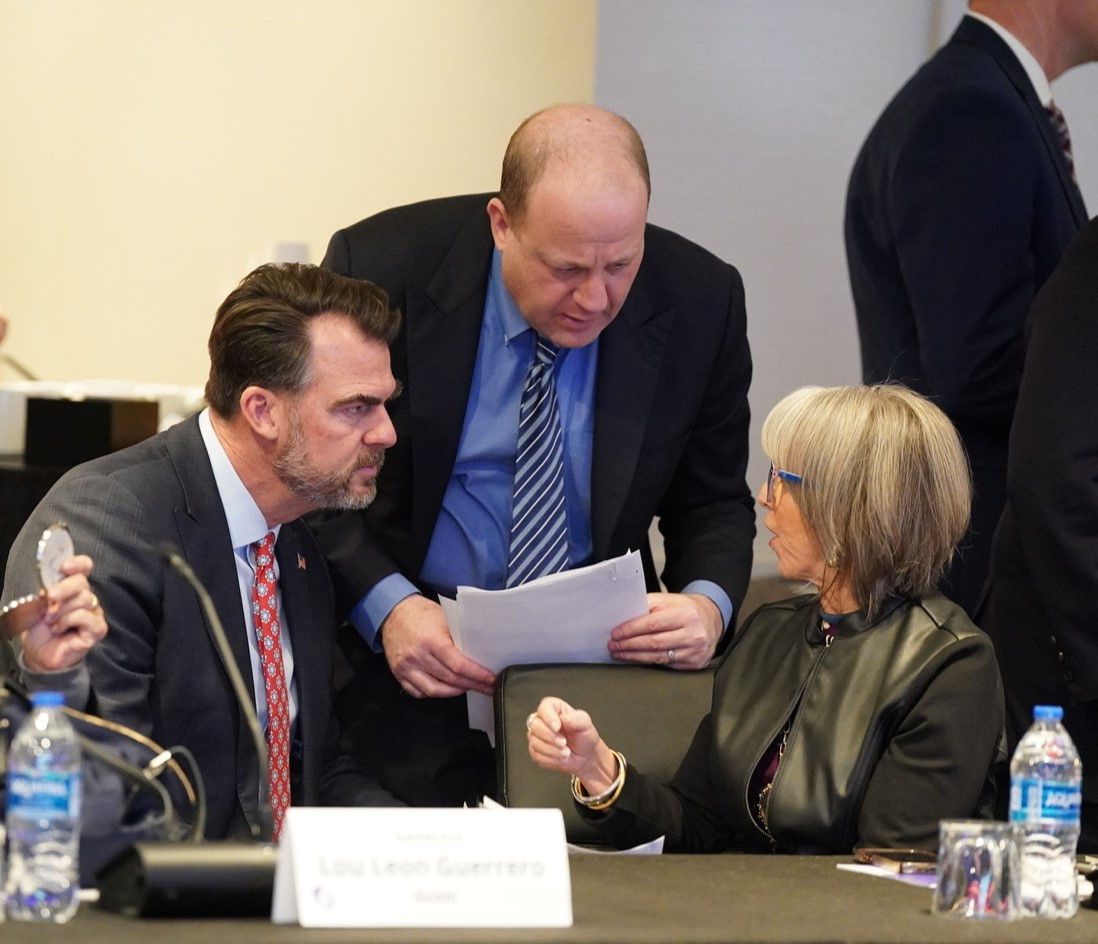As the economic recovery picks up, governors and state leaders are identifying and addressing barriers that keep their workforce from returning to work and filling open positions posted by employers.
(Download)
Summary
As the economic recovery picks up, governors and state leaders are identifying and addressing barriers that keep their workforce from returning to work and filling open positions posted by employers. With the aim of enabling greater engagement with the labor market, 24 states have provided written notification to the U.S. Department of Labor (USDOL) that their states will terminate the agreement related to all or most of the unemployment insurance (UI) programs created in response to the pandemic, and many states have reinstated requirements that those receiving UI search for work while also including information on how job seekers can access state labor exchange portals. In an effort to encourage unemployment claimants as well as those who have stopped looking for work (who are no longer included in labor force participation statistics), states have announced return-to-work incentives and supports for both jobseekers and employers with open positions. There are, however, additional factors to consider in understanding barriers workers may face in returning to work quickly. Governors and states are addressing these barriers in a number of ways.
Background on Return-to-Work Barriers
There is evidence that points to many factors that may inhibit an unemployment claimant’s ability to reconnect with the job search process, although the significance of each factor is still being explored. These include factors such as an inability to find employment opportunities at their pre-unemployment wage level, prolonged access to unemployment compensation, unassessed reskilling or occupational training needs, barriers to searching for work, access to affordable child care, mental health issues brought about by the loss of employment, pandemic-related disability, fear of contracting COVID-19, and discriminatory labor market practices. Eventually, unemployed workers “fall out” of the labor force participation rate as they stop actively seeking work, obscuring the true picture of overall labor market health. Eventually unemployment compensation expires, and workers’ soft and hard skills and competencies are at risk of atrophy.
Addressing Barriers to Returning to Work and Filling Open Jobs Quickly
The following actions by states can help address barriers and challenges that impair the ability of many to return to work and increase the rate at which some open jobs may be filled:
- Providing monetary incentives to return to work;
- Ensuring access to affordable child care;
- Reimplementing work search requirements and providing access to information about available jobs and services available to jobseekers via the public workforce system;
- Providing instruction on calculating benefits and compensation that support a job seeker and/or their family’s self-sufficiency, when working part-time or when a new job is obtained (addressing the “benefits cliff”);
- Providing access to information about assistance available through the public workforce system for employers seeking qualified candidates;
- Increasing employer access and awareness of state reporting mechanisms for workers who refuse safe and suitable work;
- Addressing hesitancy to return to workplaces due to pandemic-related health and safety concerns;
- Addressing enduring impacts of the pandemic on individuals’ mental health and wellbeing;
- Understanding and accounting for changing job and career preferences among workers as they consider re-entering the workforce.
The Coronavirus Aid, Relief, and Economic Security (CARES) Act and American Rescue Plan Act created new UI programs, including: Federal Pandemic Unemployment Compensation (FPUC), Pandemic Unemployment Assistance (PUA), Pandemic Emergency Unemployment Compensation (PEUC), and Mixed Earners Unemployment Compensation (MEUC). On May 7, 2021, The Chamber of Commerce, in a press release calling for an end to the $300 weekly FPUC, cited a “dismal April jobs report” as evidence that individuals collecting unemployment benefits have a disincentive to work.
Labor market data provides some indication of the workforce supply and demand issues in the economic recovery and looking at recent statistics compared to the prior year also provides a snapshot on the economic impact of the pandemic. The Bureau of Labor Statistics (BLS) April 6, 2021 Job Openings and Labor Turnover Survey reported that there were 7.4 million unfilled jobs in the U.S. on the last day of February 2021 However, compared to February 2020, the April 2, 2021, BLS Employment Situation monthly jobs report shows there are 1.4 million more persons employed part time for economic reasons. It also shows that the labor force participation rate is 1.8 percent lower (61.5 percent), and that there are 3.1 million more (4.2 million total) long-term unemployed (those jobless for 27 weeks or more). In addition, 11.4 million persons reported that they had been unable to work because their employer closed or lost business due to the pandemic – that is, they did not work at all or worked fewer hours at some point in the last 4 weeks due to the pandemic. Encouragingly, this number is down from 13.3 million the month prior. For the week ending March 27, 2021, there were over 16.9 million claimants receiving unemployment across all programs, down from nearly 18.2 million the week prior.
A recent report from The Federal Reserve Board using responses from the eighth annual Surveys of Household Economics and Decision making found 22 percent of all parents were either not working (9 percent) or were working less (13 percent), and the 9 percent of parents who were not working translates into a nearly 2 percentage point decline in the number of parents working overall due to unexpected pandemic-related need for childcare. The economic impact from the pandemic has been particularly disruptive to women’s participation in labor force, and this may be partly due to limited access to child care or in-school instruction and the fact that domestic child care burdens tend to fall largely on women.
Along with new CARES Act UI programs, many states paused requirements that UI recipients search for work during the pandemic in accordance with a Governor’s executive orders. This was also applied to the Reemployment Services and Eligibility Assessment (RESEA) program (which connects UI recipients to individualized career services in the workforce development system), although some states found innovative ways to encourage meaningful assessment and work search opportunities.
Individuals who are working part-time and do not earn more than a limited amount as defined by the state may continue to collect unemployment compensation while working in a part-time capacity. As long as the individual is willing and able to work full-time and meets other requirements for receiving benefits, they may be able to earn wages from part-time work and still collect a partial benefit.
All states have a refusal-to-work reporting process for employers to report individuals who refuse offers to return to work for reasons apart from workplace safety. When a worker refuses work, is able and willing to work, and continues to collect UI benefits without a valid reason to continue receiving benefits under USDOL and state approved criteria, then the claimant’s continued collection of benefits is classified as fraud.
In addition to these issues, several states have also cited marketing and communications as a major challenge in letting would-be jobseekers know about open jobs and the training and reemployment services available to them through state and local programs. This has been particularly challenging lately since many who are now unemployed or looking for work are not “regular customers” of the workforce system and may not be aware of the services and supports available to help them more quickly land a job. The same is true for employers who perhaps have not previously connected with the state’s workforce system for support in finding qualified candidates.
Finally, some workers and jobs seekers who have been physically and mentally impacted by the corrosive effects of the COVID-19 pandemic may have additional barriers to engaging with the work search process and may need reasonable accommodations to assist with employment.
State Solutions for Helping People Return to Work and Filling Job Openings
Providing Monetary Incentives to Return to Work
Colorado Governor Jared Polis’ office announced the Colorado Jumpstart Incentive program that provides unemployed Coloradans a financial incentive if they return to work full time. Unemployed individuals are eligible to receive an incentive of up to $1,600 to support the transition into full-time work.
Connecticut Governor Ned Lamont, announced the state will provide a $1,000 return-to-work bonus to 10,000 long-term unemployed residents who land full-time jobs and work for at least eight weeks.
Idaho Governor Brad Little set aside $100 million in federal coronavirus relief funds to cover one-time cash bonuses of up to $1,500 for full-time work and up to $750 for part-time work to those that returned to the workplace. The funds were available on a first-come, first-served basis (based on date of return to work) for qualified applicants. 10,000 Idaho Return to Work bonuses were sought for employees by nearly 2,000 Idaho businesses.
Montana Governor Greg Gianforte recently announced two measures to address the state’s severe workforce shortage and incentivize Montanans to reenter the labor force. The State launched a return-to-work bonus program, utilizing federal funds authorized by the American Rescue Plan Act. One-time $1,200 return-to-work bonuses will be paid to unemployed individuals who rejoin the labor force and accept and maintain steady employment for at least one month. The governor also announced the State will end its participation in federal pandemic-related unemployment benefit programs and transition to pre-pandemic UI eligibility and benefits by the end of June.
Maryland’s Department of Commerce and the Maryland Department of Labor are providing funding using the Workforce Innovation and Opportunity Act Governor’s set aside for statewide activities to support an initiative between the Maryland Center for Hospitality Training and Ocean City Hotel-Motel-Restaurant Association to fill 12,000 seasonal jobs. Through the program, workers looking to enter the hospitality industry will be recruited, vetted, and trained and then connected with eligible businesses. To help incentivize workers participation, the state will provide housing opportunities as part of the employment package.
Oklahoma Governor Kevin Stitt and Oklahoma Employment Security Commission Executive Director Shelley Zumwalt announced a new Return to Work Incentive for Oklahomans who are receiving unemployment benefits. The first 20,000 Oklahomans currently receiving unemployment benefits who return to the workforce will receive a $1,200 incentive using funds from the American Rescue Plan. All federal benefits will end June 26, 2021, giving Oklahomans six weeks’ notice of termination. The Return to Work Incentive will be enacted via Executive Order 2021-15.
The Vermont Returnship Program, developed collaboratively between A4TD and the Vermont Department of Labor, connects employers with experienced workers who are looking for new opportunities. A returnship is a limited-duration on-the-job work experience, similar to an internship, designed specifically for adults with previous experience in the workplace who have taken time away from their careers who seek to reenter the workforce. Returnships are approximately three weeks in length, during which time participants receive a stipend from A4TD and are covered for workers’ compensation insurance.
Increasing Access to Affordable Child Care
Michigan Governor Gretchen Whitmer announced the three regional facilitator hub awardees of the MI Tri-Share Child Care Pilot Program (Tri-Share), an innovative approach to increasing access to high quality, affordable child care for working families, while also helping to retain talent and removing one major barrier to employment. Through Tri-Share, the cost of child care is shared equally by an eligible employee, their employer, and the State of Michigan, with coordination being provided regionally by a facilitator hub. Funded with a $1 million appropriation in the FY 2021 budget, the program will operate initially in three regions of the state, and will be administered by the Michigan Women’s Commission, housed within the Department of Labor and Economic Opportunity.
Oklahoma Human Services (OKDHS) offered 60 days of subsidized child care to Oklahomans who are looking for work due to the loss of employment during the COVID-19 crisis. The funding for this program was made possible by a $50 million block grant through the federal CARES Act. The fund allows families seeking employment to receive up to 60 days of child care as they try to reenter the workforce.
Addressing Work Search Flexibility and Access to Labor Exchange Portals
In Michigan, if an employee refuses to return to “suitable work” the Unemployment Insurance Agency will conduct a fact specific inquiry. Governor Gretchen Whitmer expanded the definition of “good cause” for not returning to work to include COVID-19 specific reasons. You can find the criteria for “suitable work” here.
North Carolina Governor Roy Cooper through Executive Order No. 200 established a “flexible work-search requirement” for all claimants. The EO requires the North Carolina Department of Commerce to “create a process to assist and ensure that all New Claimants are registered with a jobseeker account in www.ncworks.gov” and “to interpret work search laws flexibly to account for burdens posed by COVID-19 that could affect a job seeker’s ability to satisfy search requirements.” Gov. Cooper later issued Executive Order 216, stating that all existing claimants of unemployment benefits will be required to fulfill work search requirements beginning June 6, 2021. All existing claimants will be required over the next several weeks to register with a jobseeker account on www.NCWorks.gov.
Calculating Worker Benefits and Compensation
Maine has created aPartial Benefit Calculator for workers who may be working part-time while also continuing to file unemployment claims. This tool on Maine’s website can help calculate how many hours a week workers could work and still collect partial benefits based on weekly earnings. The calculator can be found on the below webpage, under “Looking for work?” https://www.maine.gov/unemployment/. unemployment benefits. The state also provides detailed instruction and advises claimants on the unemployment eligibility process.
Creating an Employer Refusal to Work Reporting Mechanism
Maine also assists employers by providing a reporting mechanism for workers who refuse work: https://www.maine.gov/unemployment/ucbr/. In addition, the Maine CareerCenters are also available to help employers with recruiting, training, and setting up virtual or drive-through hiring fairs, at no charge. CareerCenter contact information can be found here: www.mainecareercenter.gov.
Texas asks employers to fill out the Employer Work Refusal Documentation form if an employee has a chance to return to work and refuses.
The Vermont Department of Labor gives employers an option to submit a report of refusal to work through an online portal. Previously laid-off or furloughed employees who are called back to work and temporarily laid-off or furloughed employees of employers accepted in the Paycheck Protection Program (PPP) that are offered regular work, at the same rate of pay that they were working prior to COVID-19, must be reported to the Vermont Department of Labor.
Washington has an eServices site for employers to file a reporting form if an employee turned down an opportunity to return to work and provides information and resources for workers who are receiving benefits and cannot return to work when asked to do so.
Addressing Mental Health and Wellbeing
Alabama’s state workforce development board, AlabamaWorks!, partnered with the Department of Mental Health, the University of Alabama School of Social Work and other stakeholders to conduct an Alabama Workplace Health Survey that received over 900 responses across a variety of industries. One finding of the survey was that employers – particularly managers and supervisors – need additional training to recognize and support employees who may be experiencing a mental health or substance use concern in a work environment. The state used this finding to inform a component of its Alabama Workforce Stabilization Program (AWSP), in which the state partners that conducted the survey will collaborate to provide mental health training to up to 200 employers and use marketing promotions to increase awareness on workplace mental health and substance use needs.
For more questions or information related to the contents of this memo, please contact Loren Shimanek, a senior policy analyst in the Workforce Development & Economic Policy program at the NGA Center for Best Practices (lshimanek@nga.org).













